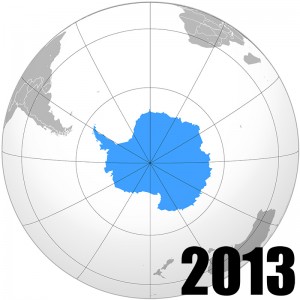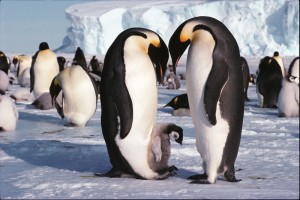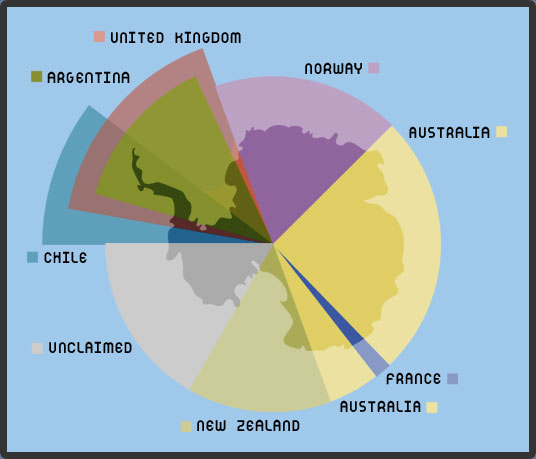 Antarctica Population 2013
Antarctica Population 2013
Antarctica’s population is very difficult to account for since the number is so small and varies during the year. Antarctica has a permanent human population of zero. Antarctica’s population is made up entirely of researchers and scientists from around the globe. About 1,000 scientific personnel live there during the winter and this population increases to about 5,000 during the Antarctic summer. Antarctica experiences summer while it is winter in North America and Europe so a lot scientists go to Antarctica during the Northern hemisphere’s winter.
Antarctica is the Earth’s southernmost continent, containing the geographic South Pole. It has no permanent residents, but a number of governments maintain permanent manned research stations throughout the continent. It is situated in the Antarctic region of the Southern Hemisphere, almost entirely south of the Antarctic Circle, and is surrounded by the Southern Ocean. On average, it is known to be the coldest, driest and windiest continent and has the highest average elevation of all the continents.
Antarctica Land Mass
At 14.0 million km2 (5.4 million sq mi), it is the fifth-largest continent in area after Asia, Africa, North America, and South America. For comparison, Antarctica is nearly twice the size of Australia. About 98% of Antarctica is covered by ice that averages at least 1 mile (1.6 km) in thickness.
Antarctica Climate
Antarctica, on average, is the coldest, driest, and windiest continent, and has the highest average elevation of all the continents. Antarctica is considered a desert, with annual precipitation of only 200 mm (8 inches) along the coast and far less inland. The temperature in Antarctica has reached −89 °C (−129 °F). Only cold-adapted organisms survive there, including many types of algae, animals (for example mites, nematodes, penguins, seals and tardigrades), bacteria, fungi, plants, and protista. Vegetation where it occurs is tundra.
Discovery of Antarctica
Till the 17thcentury, most of the audacious explorers treated this voyage as something next to impossible. While Antarctica was longing to see a man, the famous explorer Captain James Cook took the lead & circumnavigated this continent during 1772 to 75. Deriving inspiration from him, numerous explorers made attempts to reach there, but many would not make it. Nearly after 150 years that is in 1911, a Norwegian explorer finally made it to the South Pole. His name was Ronald Amundsen. He led the Antarctic expedition (1910-1912) to discover the South Pole in December 1911 and he was the first expedition leader to reach the North Pole in 1926. He is also known as the first to traverse the Northwest Passage (1903–1906). He disappeared in June 1928 while taking part in a rescue mission.
Scientific Committee on Antarctic Research
The Scientific Committee on Antarctic Research is an inter-disciplinary committee of the International Council for Science (ICSU). SCAR is charged with initiating, developing and coordinating high quality international scientific research in the Antarctic region, and on the role of the Antarctic region in the Earth system. The scientific business of SCAR is conducted by its Standing Scientific Groups which represent the scientific disciplines active in Antarctic research and report to SCAR.
In addition to carrying out its primary scientific role, SCAR also provides objective and independent scientific advice to the Antarctic Treaty Consultative Meetings and other organizations on issues of science and conservation affecting the management of Antarctica and the Southern Ocean. In that role, SCAR has made numerous recommendations on a variety of matters, most of which have been incorporated into Antarctic Treaty instruments. Foremost amongst these have been the advice provided for the many international agreements which provide protection for the ecology and environment of the Antarctic.
Antarctica Research Stations & Bases
Base Esperanza, Argentina’s largest Antarctic facility, is located in Hope Bay on the tip of the Antarctic Peninsula. The station is known for a number of Antarctica “firsts.” It is the birthplace of Emilio Marcos Palma, the first person to be born in Antarctica. Base Esperanza also houses the first Catholic chapel (1976) and first school (1978) built on the continent. In 1979, Base Esperanza became the continent’s first shortwave radio broadcaster, connecting the research station with Argentina’s continental territory.
Davis Station is Australia’s busiest scientific research station. It is located in an ice-free area known as the Vestfold Hills. Like most research stations in Antarctica, food is very important at Davis Station. Residents live and work closely together in facilities and outdoor environments that are often very monotonous. As such, food plays an important role in providing variety to residents like those at Davis Station.
Food supplies are, however, very limited. The food supply for a year at Davis Station is rationed, per person per year. Residents live mostly on frozen and canned food. The chef is often thought of as one of the most important people at Davis Station. He or she must make sure to use all commodities in such a way that is both creative and sustainable. Some of the station’s most important events revolve around the chef’s creations, such as the Midwinter Dinner, a traditional, sumptuous feast first celebrated during the 1901-04 British Antarctic Expedition.
Like many of Antarctica’s research facilities, Davis Station has a hydroponic greenhouse. Hydroponics is the practice of growing plants with water and nutrients only. Hydroponics requires excellent gardeners because produce is grown without soil. Fresh produce adds variety and nutrition to Antarctic meals. The greenhouse also serves as a sunroom for sunlight-deprived residents, especially during the long winter months.
 Antarctica Wildlife
Antarctica Wildlife
The wildlife of Antarctica are extremophiles, having to adapt to the dryness, low temperatures, and high exposure common in Antartica. The extreme weather of the interior contrasts to the relatively mild conditions on the Antarctic Peninsula and the subantarctic islands, which have warmer temperatures and more liquid water. Much of the ocean around the mainland is covered by sea ice. The oceans themselves are a more stable environment for life, both in the water column and on the seabed.
Antarctica Territory Claim
Below is a map of the seven Antarctic territorial claims. Early Southern Ocean explorers, sealers and whalers claimed for their countries the islands closest to Antarctica as they discovered them in the late 1700s and early 1800s. Once expeditions began to discover the Antarctic continent, they too claimed the parts they saw.

Interactive World Population by Continent Map
The Antarctic Treaty
Other Resources
To learn more about the population of Antarctica, click here
Return to World Population Statistics


